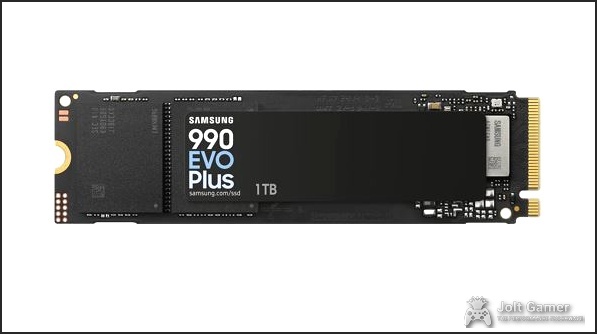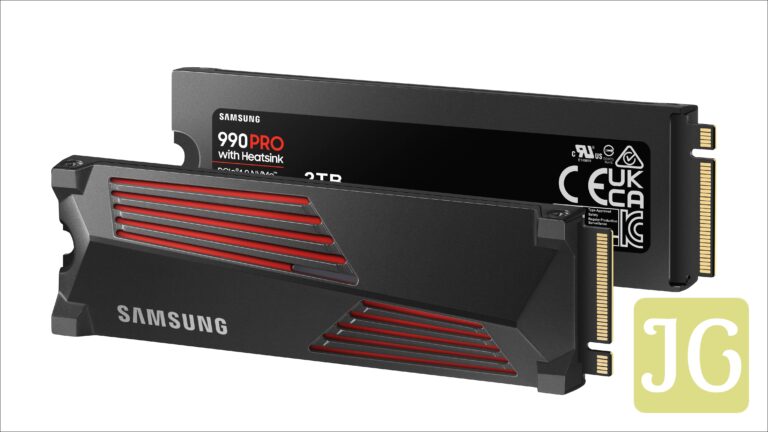Introduction: The New Era of Storage Speed
The world of PC storage is in a constant state of flux, and with the introduction of PCIe 5.0, we are witnessing a monumental leap in speed and overall capability. For serious gamers, dedicated content creators, and power users who push their systems to the limit, understanding these advancements is no longer merely advantageous—it is absolutely essential for constructing a truly future-proof rig. However, the landscape of modern SSDs can quickly become overwhelming, cluttered with technical acronyms, synthetic benchmarks, and critical thermal considerations. This JoltGamer Master Guide aims to cut through that noise, providing you with a definitive, comprehensive resource to fully understand, meticulously evaluate, and ultimately choose the perfect next-generation SSD for your exacting needs.
Key Takeaways
- PCIe 5.0 SSDs double the bandwidth of Gen4, offering speeds up to 14,900 MB/s.
- These drives are crucial for future gaming (DirectStorage), AI, and demanding professional workloads.
- Thermal management is critical for PCIe 5.0 SSDs; heatsinks are often mandatory.
- Real-world gains for average users may be less dramatic than synthetic benchmarks, but future software will leverage these speeds.
- Enterprise SSDs are pushing even higher capacities and power efficiency standards with new form factors.
Chapter 1: Understanding the Foundation – PCIe Generations Explained
At the core of modern SSD performance lies the Peripheral Component Interconnect Express (PCIe) interface. This high-speed serial computer expansion bus standard is precisely what allows critical components to communicate efficiently with your motherboard and CPU. Each successive generation of PCIe consistently doubles the bandwidth of its predecessor, leading to exponential increases in raw data transfer rates. To truly grasp the current state of SSD technology, a clear breakdown of the key differences between the generations relevant to today’s high-performance drives is essential.
PCIe Generations: Bandwidth & Speed Comparison
| PCIe Generation | Bandwidth per Lane (GT/s) | Approx. Max Sequential Speed (x4 Lane, MB/s) |
|---|---|---|
| PCIe 3.0 | 8 GT/s | ~3,900 MB/s |
| PCIe 4.0 | 16 GT/s | ~7,800 MB/s |
| PCIe 5.0 | 32 GT/s | ~14,000 MB/s |
PCIe Gen5, leveraging the PCIe 5.0 standard, represents a significant and undeniable leap over PCIe Gen4. It effectively doubles the bandwidth per lane to a blistering 32 GT/s, achieving sequential speeds of around 14,000 MB/s. This advancement enables Gen5 SSDs to deliver significantly faster data transfer rates, higher aggregate bandwidth, and superior overall performance. For applications that demand rapid data access, such as intensive gaming, complex AI processing, and the transfer of massive files, these drives offer a tangible boost in productivity and responsiveness that Gen4 simply cannot match.
Chapter 2: Decoding Performance Metrics – What Truly Matters?
Beyond the impressive, often headline-grabbing sequential read/write speeds, several other critical metrics paint a far more complete and accurate picture of an SSD’s real-world performance. Understanding these nuances is fundamental to discerning which drive truly aligns with your specific workload and expectations for system responsiveness.
- Sequential Read/Write: This measures how quickly large, contiguous files—think game installations, 4K video projects, or substantial data backups—can be moved. While prominently displayed on product boxes, it’s essential to remember that these peak figures represent ideal conditions and are only one facet of performance.
- Random IOPS (Input/Output Operations Per Second): This metric is crucial for tasks involving numerous small, scattered files, such as operating system boot times, rapid application launches, and complex database operations. Higher IOPS directly translate to superior system responsiveness and a snappier user experience, often proving more impactful than peak sequential speeds for typical desktop usage.
- Latency: Representing the delay between a data request and the commencement of data delivery, lower latency is paramount for overall system responsiveness. It is particularly critical for scenarios like instantaneous game loading and fluid OS operations, especially at low queue depths where individual requests are processed sequentially.
- TBW (Total Bytes Written) / Endurance: This metric indicates the total amount of data that can be written to the drive over its lifetime before its reliability may begin to degrade. A higher TBW rating signifies greater longevity, a particularly important consideration for heavy users, content creators, or anyone planning to keep their drive for an extended period.
- Real-world vs. Synthetic Benchmarks: Synthetic benchmarks, such as CrystalDiskMark, illustrate maximum theoretical performance under highly optimized, ideal conditions. In contrast, real-world tests, like actual game load times or large file copies, reflect practical usage scenarios and often reveal smaller, yet still significant, differences between high-end drives. For true understanding, real-world testing is paramount.
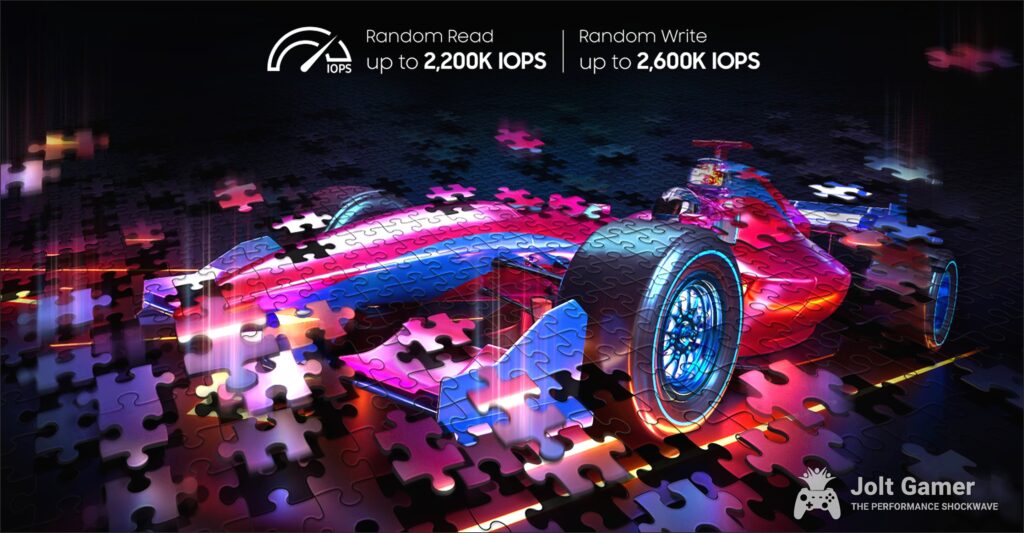
Chapter 3: The Thermal Challenge – Keeping Your Blazing Speeds Cool
With unprecedented speed comes commensurate heat. PCIe 5.0 NVMe SSDs, particularly their sophisticated controllers, generate substantial heat due to their incredible performance demands. This phenomenon presents a major thermal management challenge, especially within the compact M.2 form factor. Without adequate and efficient cooling, these drives are engineered to throttle their performance to prevent permanent damage, thereby completely negating their inherent speed advantages and delivering a suboptimal user experience.
Heatsink Mandate!
Phison, a leading controller manufacturer (whose E26 controller powers many of the current PCIe 5.0 NVMe SSDs), has unequivocally mandated that all partner E26-based drives must include a heatsink due to the significant heat generated. Even if a bare drive is available for purchase, it is explicitly intended for users to leverage existing motherboard-integrated cooling solutions or aftermarket alternatives. Overlooking this critical component is a common pitfall that can severely impact performance and longevity. Do not underestimate the heatsink!
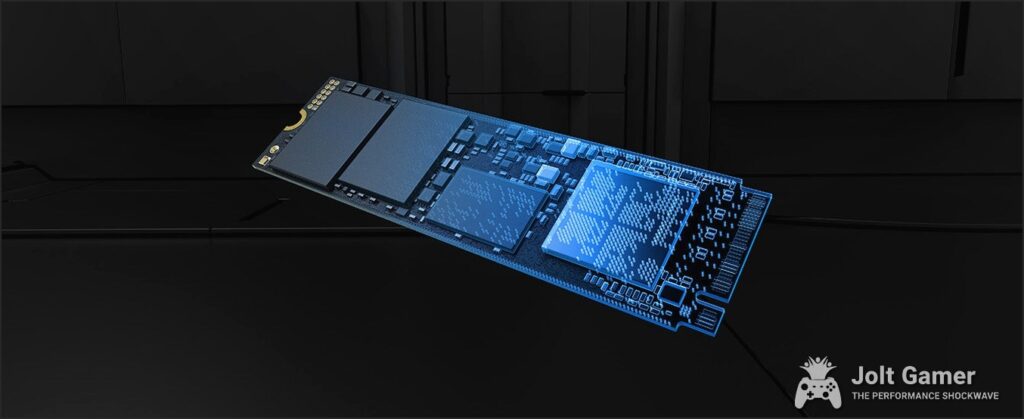
Motherboard manufacturers are actively responding to this challenge by increasingly integrating robust M.2 cooling solutions, often featuring active cooling elements in more compact ITX form factors. However, for enterprise environments, where numerous 10W components accumulate rapidly within a confined server chassis, the M.2 form factor is proving increasingly inadequate. This necessitates a strategic shift to larger, more easily cooled EDSFF family drives. These solutions are better equipped to handle the escalating power consumption—which can be 2-3 times higher per disk than traditional SAS SSDs—and ensure long-term reliability and sustained performance crucial for data center operations.
Chapter 4: Spotlight on PCIe 5.0 Champions – Consumer SSDs
Several manufacturers are fiercely leading the charge with truly impressive PCIe 5.0 NVMe SSDs specifically engineered for the discerning gamer and power user. Below, we provide a detailed look at some of the standout models currently available and the sophisticated controllers that power their exceptional performance.
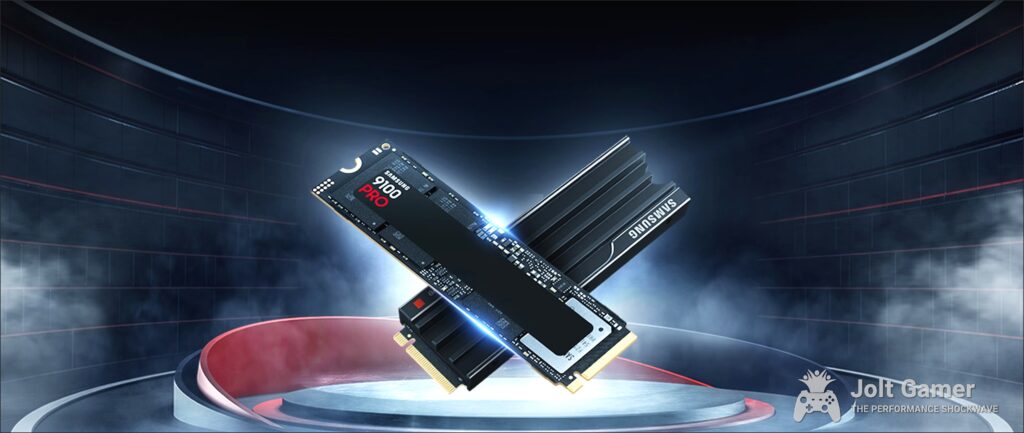
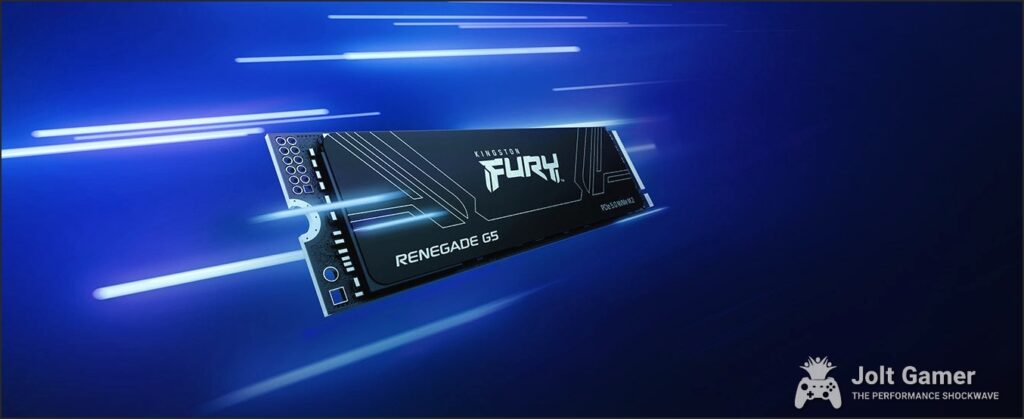
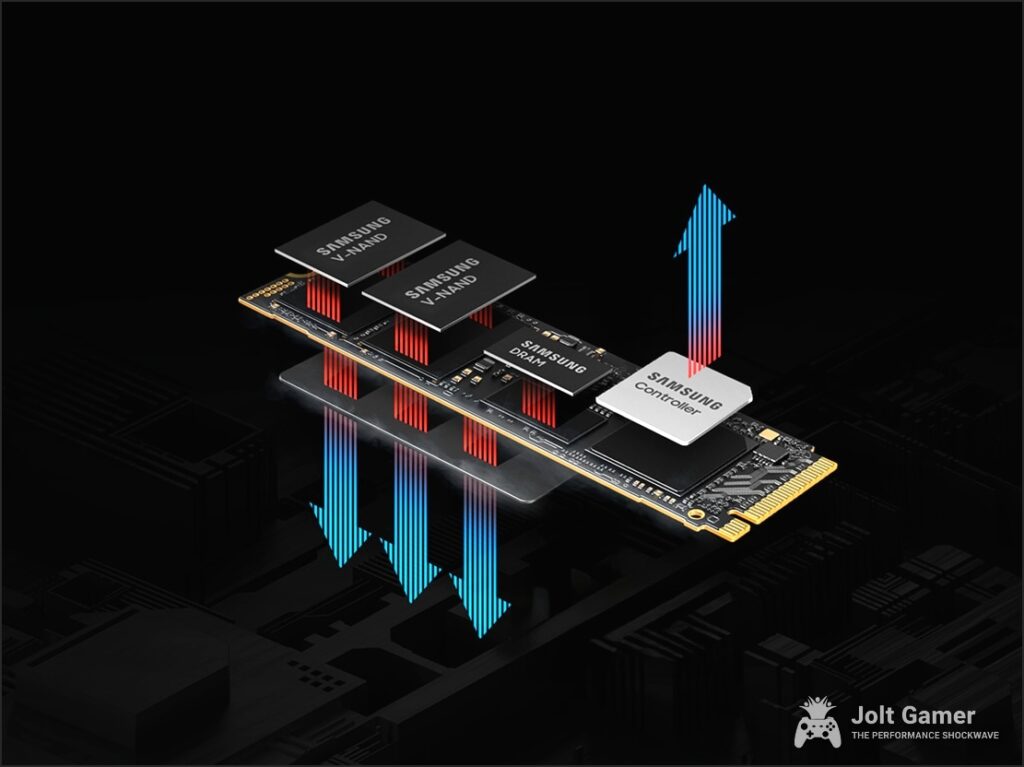
Key Consumer PCIe 5.0 NVMe SSDs (Comparison for 2TB Models)
| Feature | Crucial T700 (2TB) | Kingston FURY Renegade G5 (2TB) | Lexar NM990 (2TB) | Samsung 9100 PRO (2TB) |
|---|---|---|---|---|
| Interface | PCIe Gen 5.0 x4 NVMe | PCIe Gen 5.0 x4 NVMe | PCIe Gen 5.0 x4 NVMe | PCIe 5.0 NVMe |
| Controller | Phison E26 | Silicon Motion SM2508 | 8-channel controller | 5nm Presto controller |
| Sequential Read (MB/s) | Up to 12,400 | Up to 14,800 | Up to 14,000 | Up to 14,800 |
| Sequential Write (MB/s) | Up to 11,800 | Up to 14,000 | Up to 10,000 | Up to 13,400 |
| Random Read (IOPS) | Up to 1,500K | Up to 2,200K | Up to 2,000K | Up to 2,200K |
| Random Write (IOPS) | Up to 1,500K | Up to 2,200K | Up to 1,500K | Up to 2,600K |
| Endurance (TBW) | 1,200 TBW | 2.0 PB TBW | 1,500 TBW | N/A (High) |
| Form Factor | M.2 2280 | M.2 2280 | M.2 2280 | M.2 |
| Key Features | DirectStorage, Heatsink option | Advanced thermal design, DirectStorage | Thermal Defender, DirectStorage, DiskMaster | 8th V-NAND, Intelligent TurboWrite 2.0, Heatsink option, AI/Gaming optimized |
The Phison E26 controller is a common and powerful sight in many of these early PCIe 5.0 drives, justly celebrated for its blistering speeds but also notably for its significant heat generation. However, the industry is not static. Newer controllers, such as the Phison PS5028-E28, are meticulously designed to be single-sided, offering broad application versatility for compact devices like gaming consoles, handheld PCs, and high-performance laptops. These advancements ensure that even in constrained thermal envelopes, users can still benefit from high performance and robust reliability without compromise.
Chapter 5: Beyond the Desktop – SSDs in Handhelds & Consoles
The profound impact of high-performance SSDs extends far beyond the realm of desktop PCs. Modern gaming consoles, exemplified by the PlayStation 5 and Xbox Series X, have fundamentally reshaped game development by establishing high-performance NVMe SSDs as the baseline storage expectation. This critical shift empowers developers to craft immersive experiences previously deemed impossible, unshackled from the inherent constraints of slower hard drives. For the rapidly growing segment of handheld gaming PCs, the compact M.2 2230 form factor is gaining significant traction, demanding efficient, high-performance, and expertly thermally-managed SSDs to deliver a consistent, uncompromised gaming experience on the go.
Chapter 6: The Enterprise Edge – What Data Centers Are Using (And Why It Matters)
While our primary focus at JoltGamer is on consumer gaming, understanding enterprise-grade SSDs provides invaluable context for the absolute cutting edge of storage technology. Companies such as KIOXIA and Solidigm are actively developing advanced PCIe 5.0 SSDs specifically for data centers and vast cloud environments. These drives push boundaries in terms of raw capacity, unparalleled endurance, and critical power efficiency. They frequently utilize distinct form factors like U.2, E1.S, and E3.S, prioritizing sustained performance under heavy, mixed workloads, and offering a crucial glimpse into the future trajectory of consumer-facing technology.
- KIOXIA CD8P/CM9 Series: These represent enterprise-grade PCIe 5.0 SSDs, boasting capacities up to a staggering 30.72TB (in the U.2 form factor) and leveraging KIOXIA’s advanced BiCS FLASH 3D TLC memory. They are meticulously designed for general-purpose servers and demanding cloud environments, with the CM9 series featuring KIOXIA’s 8th generation BiCS FLASH with CBA Chip Architecture for enhanced power efficiency and density.
- Solidigm D7-PS1010: A mid-endurance PCIe 5.0 NVMe SSD tailored for data centers, optimized for mixed-workload applications. It offers capacities up to 12.8TB and introduces innovative E1.S form factors for breakthrough thermal optimization, crucial for dense server racks.
- Power Efficiency: Enterprise drives place a heavy emphasis on IOPS per watt. The cumulative power draw of thousands of SSDs can represent a significant operational cost. Innovations in this area, which directly impact the bottom line for data centers, are highly likely to eventually trickle down and benefit consumer drives, offering more efficient performance for our gaming rigs.
Chapter 7: The Future of Storage – Beyond PCIe 5.0
The storage landscape continues its relentless march forward. While PCIe 5.0 is just beginning to hit its stride and find widespread adoption, the industry is already looking ahead, innovating beyond current capabilities to deliver the next generation of performance.
- PCIe 6.0: This standard is already finalized, with initial adoption anticipated in 2023/2024. It promises yet another doubling of bandwidth, pushing theoretical speeds into truly astronomical figures and setting the stage for future data-intensive applications.
- Intel Optane & Non-Volatile Memory (NVDIMM): Technologies like Optane offer significantly lower latency—around 10µs compared to 100µs for even high-end NVMe SSDs. These innovations are bridging the critical gap between traditional SSDs and system RAM, a development crucial for server environments and with strong potential for future consumer applications demanding instantaneous data access.
- Software Innovations (Solidigm Synergy 2.0): Beyond raw hardware, intelligent software solutions are emerging. Solidigm Synergy 2.0, for example, intelligently understands system behavior and dynamically adapts to user needs, enhancing performance beyond what hardware alone can provide. Crucially, its toolkit offers valuable features compatible with SSDs from any manufacturer, not just Solidigm.
- Custom Silicon (AMD ‘Fenghuang’): AMD’s custom Zen APU, code-named ‘Fenghuang,’ designed for specific Chinese gaming PCs and consoles, integrates GDDR5 memory directly on the package. This showcases alternative, highly integrated approaches to high-performance memory and storage solutions, hinting at custom designs that prioritize specific performance targets and form factors.
Chapter 8: Making Your Choice – A Buyer’s Guide
- 1. Is PCIe 5.0 Worth It NOW? For most common desktop workloads today (such as OS boot times, general application launches, or even many current game loading sequences), the real-world perceived difference between a budget SATA SSD and a high-end NVMe SSD can be surprisingly minimal. However, for true future-proofing, upcoming DirectStorage-optimized games, demanding AI processing tasks, and heavy content creation, PCIe 5.0 offers undeniable advantages that will become significantly more pronounced as software ecosystems evolve to fully leverage these speeds.
- 2. Capacity, Price, and Performance: Begin by prioritizing capacity if you manage a large game library or extensive media files. Then, meticulously balance the drive’s price against the performance you genuinely require. Remember, higher capacities often come with the added benefit of better endurance (TBW ratings) and, in some cases, slightly higher overall speeds.
- 3. Do You Need a Heatsink? For virtually all PCIe 5.0 drives, a heatsink is not just recommended—it’s often mandatory to prevent thermal throttling. If your motherboard is equipped with a robust, integrated M.2 heatsink, you might be adequately covered with a bare drive, but always verify thermal performance under load. Otherwise, opting for an SSD with a factory-installed, high-quality heatsink is a non-negotiable step.
- 4. DirectStorage & Game Optimization: The current generation of gaming consoles has irrevocably set a new, higher baseline for game development, mandating high-performance SSDs. Games are increasingly being designed to fully leverage fast SSDs, making PCIe 5.0 a very wise investment for future titles that will stream assets much faster, drastically reducing load times and improving overall game flow. This is where the raw bandwidth truly shines.
The JoltGamer Verdict: Embrace the Speed, Respect the Heat
PCIe 5.0 SSDs are not merely a marginal upgrade; they represent a fundamental, impactful shift in storage performance, effectively doubling the bandwidth of previous generations. This technology lays the crucial groundwork for truly next-generation gaming experiences and unequivocally empowers the most demanding professional workloads. While the immediate, perceived real-world benefits for casual users might be subtle in today’s software landscape, the raw power and immense future potential for applications like DirectStorage, advanced AI computations, and large-scale data processing are absolutely undeniable. The critical takeaway is clear and empirically proven: if you are investing in PCIe 5.0, you must meticulously account for its significant thermal demands. With the right cooling infrastructure in place, these drives stand as the undisputed champions of speed, offering an unparalleled storage experience for those who demand the absolute best. For the discerning JoltGamer enthusiast, a well-chosen and properly cooled PCIe 5.0 SSD is an essential, cornerstone component for any high-performance build.
Frequently Asked Questions About PCIe 5.0 SSDs
What is the main benefit of a PCIe 5.0 SSD over a PCIe 4.0 SSD?
The primary benefit is a doubling of the available bandwidth, which directly translates to significantly faster sequential read/write speeds, reaching up to approximately 14,000 MB/s compared to around 7,000 MB/s for PCIe 4.0. This increased throughput, combined with higher random IOPS, results in quicker load times for games and applications, and more efficient handling of massive files and demanding workloads like advanced AI processing. It’s a raw performance leap that lays the foundation for future software.
Do I need a new motherboard for a PCIe 5.0 SSD?
Yes, to fully exploit the blistering speeds of a PCIe 5.0 SSD, you will absolutely need a motherboard equipped with a native PCIe 5.0 M.2 slot. While a PCIe 5.0 drive will technically function in older motherboards with PCIe 4.0 or 3.0 slots, its performance will be strictly limited to the maximum speed of that older, slower interface. Investing in a PCIe 5.0 SSD without a compatible motherboard means you are leaving a significant portion of its potential on the table.
Is a heatsink really necessary for a PCIe 5.0 SSD?
For the vast majority of PCIe 5.0 SSDs, a heatsink is not just recommended, it’s virtually mandatory. These drives, particularly their controllers, generate substantial heat under load. Without proper cooling, they will inevitably thermally throttle, which severely reduces performance and can potentially shorten the drive’s lifespan. Many modern motherboards now include integrated M.2 heatsinks, or you can purchase SSDs with high-quality, pre-installed heatsinks. Do not neglect this critical component.
Will a PCIe 5.0 SSD make my games load instantly?
While PCIe 5.0 SSDs dramatically reduce load times, claiming ‘instantly’ is an exaggeration. For many currently optimized games, the perceived difference in loading times compared to a high-end PCIe 4.0 SSD might be less pronounced than synthetic benchmarks suggest. However, as game developers increasingly optimize their titles for technologies like Microsoft DirectStorage, the immense bandwidth of PCIe 5.0 will become much more noticeable, delivering truly transformative loading experiences.
What is DirectStorage and how does it relate to PCIe 5.0 SSDs?
DirectStorage is a cutting-edge API (Application Programming Interface) that allows games to load assets directly from the SSD to the GPU, fundamentally bypassing the CPU. This significantly reduces CPU overhead and dramatically improves loading times. PCIe 5.0 SSDs are crucial here because they provide the immense bandwidth and low latency necessary to fully leverage DirectStorage, making them the ideal choice for future game titles explicitly designed to utilize this groundbreaking technology.



